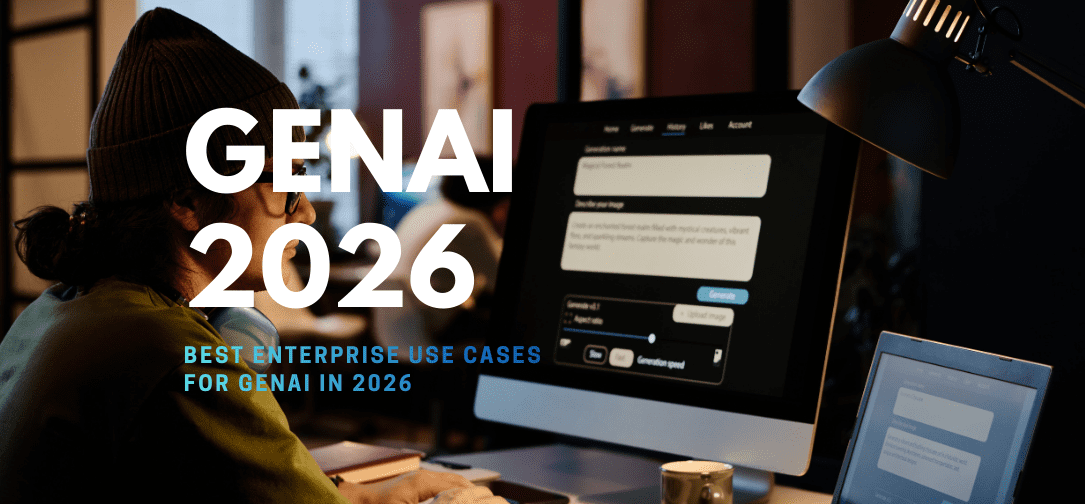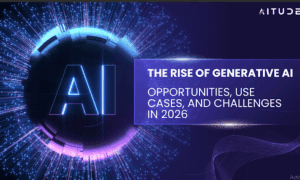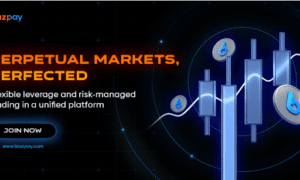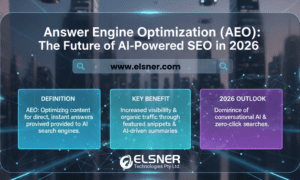What if your company already has all the intelligence it needs – just trapped across PDFs, emails, dashboards, and people’s heads?
GenAI in the enterprise isn’t about creating something new. It’s about unlocking what you already have but can’t access fast enough.
In 2026, the most valuable GenAI use cases aren’t shiny experiments – they’re the ones that convert scattered institutional knowledge into operational power: faster decisions, smarter workflows, and real-time understanding of customers, markets, and risks.
Knowledge Assistants That Reflect The Company’s Memory
Every organization holds a long trail of documents created at different moments for different purposes. Some belong to early product cycles, some to legal work, some to onboarding processes written decades apart. People often search through all this material by guesswork. GenAI can read the entire trail as a single continuous field and respond to questions that used to require hours of digging.
This kind of assistant helps when teams need context from older decisions, or when new employees join and wonder how certain rules came about. A tool capable of retrieving the right fragment at the right moment changes the rhythm of work. Engineers, analysts, and managers move with greater confidence because the past becomes accessible instead of buried.
Spectralica often sees this scenario at mature enterprises where institutional memory spans many periods of growth. Leaders appreciate that such assistants reduce friction without forcing dramatic workflow changes.
Decision Support For Fast-Moving Operational Teams
Operational groups deal with constant motion: new shipments, vendor delays, shifts in demand, unexpected service requests, and subtle signs that a situation requires attention. People in these roles make frequent decisions that depend on many signals. Before detailing the effect of GenAI on these teams, it helps to outline situations where the technology brings steady results:
Situations Where GenAI Strengthens Decisions:
- Morning preparation for planning meetings;
- Summaries of overnight activity across multiple systems;
- Early warnings about deviations from familiar patterns;
- Comparisons between current metrics and earlier periods;
- Short briefings that highlight practical next steps.
These assistants reduce the noise that often surrounds morning routines. Teams start the day with a calm overview rather than switching between multiple dashboards. Spectralica frequently notices that leaders rely on these briefings to maintain alignment across distributed units.
Once the pressure of manual data review decreases, people focus on coordination and execution with less hesitation.
Customer Intelligence That Tracks Subtle Shifts
Customer behavior changes in small ways long before a major decision appears. A series of repeated searches, hesitation during checkout, sudden declines in activity, or unusual timing often signals a shift that classic segmentation fails to capture. GenAI reads these clues with greater sensitivity. It sees the tempo of each interaction rather than grouping customers into strict categories.
Enterprises apply this knowledge to prepare timely recommendations, adjust service flows, or support customers who show signs of frustration. When these systems operate on private models, the observations stay within the company and reflect its own patterns rather than generic consumer templates.
Spectralica has seen meaningful results in organizations with a broad consumer reach. Leaders note that their service teams notice issues earlier and respond before a minor inconvenience becomes a larger problem.
Document-Heavy Workflows That Require High-Speed Interpretation
Some roles revolve around reading: contract evaluation, compliance review, vendor onboarding, investigation of support cases, and long-form communication that arrives from multiple sources. People in these positions often move slowly because the material demands concentration. GenAI supports these workflows by enabling the processing of large amounts of text without losing important fragments.
Before listing common use cases, a short overview helps frame the pattern:
Document Workflows That Benefit From GenAI:
- Contract review and comparison;
- Initial sorting of incoming requests;
- Identification of unusual clauses in agreements;
- Summaries of long communication threads;
- Preparation of concise notes for leadership.
These improvements shorten the path between receiving information and taking action. Teams retain full responsibility for decisions, while GenAI reduces repetitive reading.
Spectralica has seen this approach strengthen accuracy in organizations that manage large volumes of operational documents.
Support For Engineering And Product Development
Technical teams operate in an environment filled with diagrams, old architecture notes, code comments, sprint logs, and discussions from earlier phases. Memory plays a large role, and new engineers often rely on colleagues to explain why certain decisions were taken. Private GenAI models help by providing clear explanations of previous work, relationships among services, and summaries of technical debates.
Product managers use similar tools to compare feedback from various regions, identify recurring complaints, and connect earlier research with current needs. This reduces delays during planning cycles. Spectralica has noticed that when enterprises introduce such assistants, onboarding for new engineers becomes smoother, and teams maintain continuity across long development periods.
Financial And Risk Teams Working With Mixed Materials
Finance and risk units face a demanding mix of structured tables, commentaries, policy notes, and audit findings.
GenAI can draft initial monthly analyses, draw on prior patterns, and surface recurring themes across long reports. Specialists continue to review the material with full attention, yet they receive an initial foundation faster.
Enterprises that adopt this style of support say that month-end routines become less frantic. The technology offers a reliable starting point, while the team shapes the final output with professional judgment. Spectralica often assists such groups in building tailored intelligence layers around their secure systems.
Internal Communication That Stops Fragmenting
Large companies generate a river of messages: meeting notes, policy adjustments, project logs, and question threads. People struggle to understand which updates matter and where to find the latest version of anything. GenAI organizes these flows into approachable summaries. Employees ask for progress on a project, and the system responds with a concise update that covers several channels at once.
This support reduces confusion and helps departments stay aligned, especially when work spans multiple regions. Spectralica has observed this outcome in international organizations where communication volume overwhelms traditional tools.
Shifts Already Visible Inside Leading Enterprises
GenAI brings the strongest results inside ordinary workflows. The value grows when knowledge moves freely, decisions arrive sooner, and employees gain regular access to older context. Companies that invest in these directions during 2026 build an internal environment where understanding forms faster than before.
Spectralica sees this pattern across industries: once information stops hiding in forgotten places, teams operate with steady focus and far greater confidence.



































